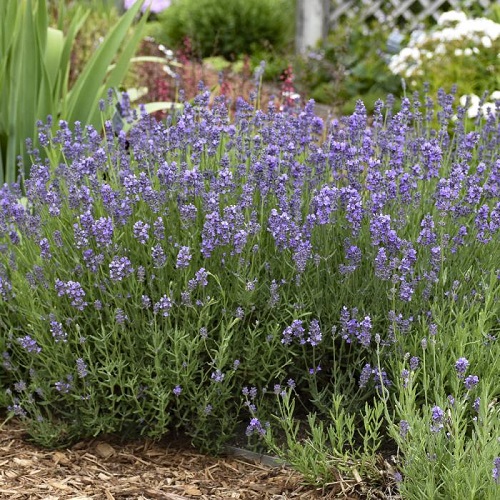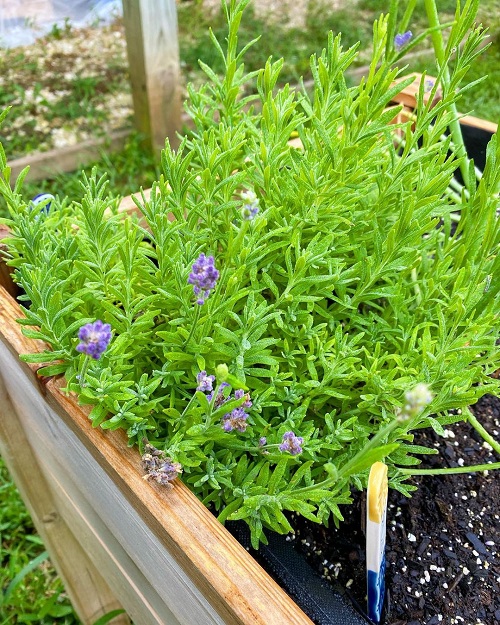Confused about What to Do with Your Lavender Plants Before Winter? Follow our guide to help them survive the cold!
This sun-loving shrub works well as a hedge, garden border, companion plant to veggies, or even a great culinary herb in your kitchen! However, as it gets colder, you’ll have to winterize it to keep your herb alive! Here’s What To Do With Your Lavender Plants Before Winter.
What To Do With Your Lavender Plants Before Winter
1. Determine your Lavender Type
To prepare your lavender plants for winter, figure out what cultivar you are growing. Different varieties tolerate different conditions.
The most common types of lavender can be categorized into English, French, and Spanish, with the first being the hardiest and most tolerant to cold.
English lavender can survive dips as low as -20 F (-29 C), while French and Spanish varieties are less cold-tolerant and will need shelter from harsh winter weather. Check out these fragrant lavender varieties you can grow indoors during winter.
2. Do Not Prune Lavender in Winter
A key step in winterizing your lavender is to avoid pruning it once frost sets in. The best time to prune lavender is in summer or fall, 6-8 weeks before the first expected frost, after it pushes out fragrant spring and summer blooms. This gives enough time to heal before the cold sets in.
For lavenders in the ground, after you’ve cut off all its blooms, give the plant a light trim to shape into a mound. This helps shelter it from snow.
Cut the newer stems, but leave the older, fragile, woody parts as they can easily break under heavy snow and ice.
Note: Always use sharp scissors or pruning shears to trim back about one-third of the plant, but no more than that.
3. Mulch for Winter Protection

Lavender doesn’t like wet, soggy soil or even frost. After you prune your lavender, apply a layer of mulch around the base of the plant. This insulates the roots and protects them from freezing in extreme, harsh winters.
Use straw, bark, or dry leaves for mulch. Spread a 2-3 inch layer on the soil, but don’t cover the plant.
4. Water Less and Carefully
Lavender is a drought-tolerant plant that flourishes in settings similar to its dry, sunny Mediterranean native habitat. Cut back on watering by late fall and before winter. Lavender plants don’t like sitting in wet soil during the cold months, which can cause root rot.
Let the soil dry out between waterings, and stop hydration entirely once the plant is dormant in winter.
5. Move Potted Lavender Plants Indoors

If you have grown lavender in pots, bring the plants indoors before winter. Potted lavender is more vulnerable to cold because the roots don’t have the earth’s sturdy protection to insulate them.
When you bring it indoors, it will need time to adjust to its new setting. Move the plant to a covered porch with less sunlight for a few hours each day for about a week. Gradually, allow it to remain in its new spot for longer hours for a week.
Once it’s ready to occupy its new home fully, place it in a sunny spot with good air circulation. And remember to water sparingly.
6. Avoid feeding Before Winter
Lavender, like most herbs, doesn’t need fertilizing a lot. Feeding them additional nutrients late in the growing season can encourage new growth that won’t have time to harden before the cold hits and make the plant more vulnerable.
The plant may enjoy fertilizing during spring and summer when it revives from the cold but avoid it in fall and winter.
7. Protect Outdoor Lavenders
Back to the potted ones outdoors during winter, here are a few steps to shelter them from extremities. Dig a hole deep enough to place the entire pot in the ground, and ensure the soil level is the same as the ground.
If you can’t bury the pot in the ground, move it near a wall to protect it from wind or place it in a shed. Place the pot inside a larger container and fill the space between them with leaves and mulch for extra insulation.
And for ones in the ground, growing perhaps as a hedge or border, use additional protection to keep them frost-free. For the less tolerant French and Spanish varieties, cover the plants with frost cloth or garden fleece.
This keeps the plants warm without trapping moisture. You can also use burlap; wrap the plant loosely with breathable materials that shield it from harsh wind and frost. And remove the coverings when the weather warms up to allow the plant to breathe.





